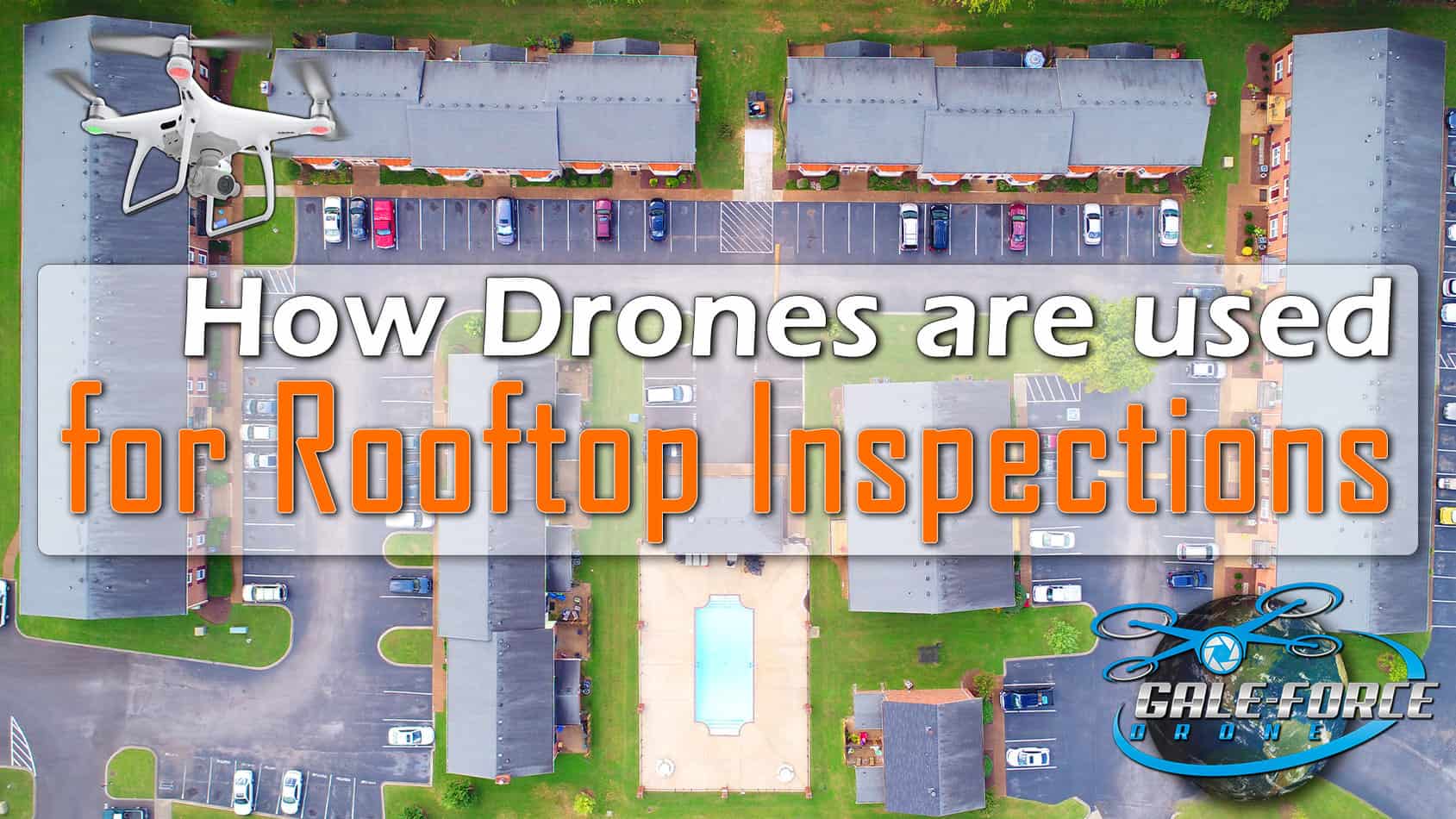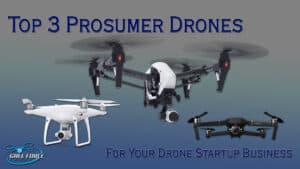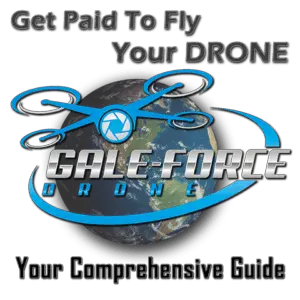

Rooftop inspections using drones have emerged as a lucrative opportunity in the commercial UAV drone industry, offering a range of benefits for both drone operators and property management companies. With their ability to provide visual assessments, capture high-resolution imagery, and identify issues such as damage, leaks, and structural weaknesses, drones have revolutionized the way inspections are conducted.
My first Rooftop Inspection sort of happened by accident. I was hired by a property management company to capture drone footage of their apartment complex for marketing purposes. Little did I know that this assignment would lead me to a new venture—rooftop inspections. When the company representative asked if I could conduct an actual inspection, I seized the opportunity, despite having never done a rooftop inspection before. Thinking fast, I offered high-resolution photo images of the rooftops, and turned out, that’s all they wanted. I doubled my fee, and not only won the client over but have been flying their properties ever since for the past six years. This experience taught me the untapped potential and immense value of drone-assisted rooftop inspections.
Now, let’s get into rooftop inspections and explore how drones can help you develop new opportunities and achieve success in this rapidly growing sector.
Safety and Efficiency
- Drones eliminate the need for manual inspections, significantly reducing the risk of accidents and injuries to personnel. Instead of climbing ladders or scaffolding, inspectors can operate the drone from a safe location, capturing detailed imagery and data. This not only ensures the well-being of the inspection team but also minimizes potential damage to the roof or surrounding areas.
- Additionally, drone inspections enable faster and more efficient data collection, saving valuable time and reducing labor requirements.
Accessibility and Flexibility
- Drones excel at accessing hard-to-reach areas, making them ideal for inspecting rooftops that are challenging to access by traditional means. Whether it’s steep roofs, tall buildings, or structures with limited entry points, drones can maneuver effortlessly, capturing data from various angles.
- This accessibility extends to different rooftop types, including residential, commercial, industrial, and institutional buildings. Drones adapt to different environments and can easily navigate complex structures, ensuring comprehensive inspections.
Detailed and Accurate Data
- One of the key advantages of rooftop inspections with drones is their ability to capture high-resolution imagery and videos. With advanced cameras and sensors, drones provide a comprehensive visual assessment of rooftops, allowing inspectors to zoom in on specific areas of interest. This detailed data offers a clear understanding of the roof’s condition, identifying potential issues like damaged shingles, cracks, or corrosion.
- Moreover, drones equipped with thermal imaging cameras can detect energy inefficiencies, water leaks, or insulation problems, providing valuable insights for maintenance and repairs.
Preventive Maintenance
- Regular drone inspections facilitate early detection of issues that could lead to more significant problems if left unnoticed. By identifying damaged areas, cracks, or structural weaknesses, proactive maintenance measures can be taken promptly.
- This helps property owners and managers save costs by addressing issues before they escalate, avoiding expensive repairs or even full roof replacements. The ability to conduct timely inspections and prioritize maintenance tasks enhances the overall longevity and durability of rooftops, improving the overall value of the property.
Rooftop inspections conducted by drones provide safety, efficiency, accuracy and cost savings to building owners. Additionally, in my experience working with this property management company, these inspections were not only essential for maintenance but also necessary to comply with finance regulations across their properties. And maybe the most important benefit aside from proactive roof maintenance, is keeping residents happy by preventing leaky roofs that can damage their belongings. Rooftop inspections by drone give property owners what they need to address issues promptly, ensuring the long-term structural integrity of rooftops.

As a new drone pilot getting into rooftop inspections, I highly recommend developing and following a methodical routine to ensure accurate and effective inspections. Let’s get into the actionable steps involved:
Pre-Flight Preparation
- Before taking off, conduct a thorough pre-flight checklist. Inspect your equipment, ensuring the drone is in optimal condition, and all components are securely attached. Verify battery levels and consider bringing spare batteries to extend flight time. Assess weather conditions and avoid flying in adverse weather such as strong winds or rain.
- Additionally, if necessary, obtain any necessary permits and always adhere to local regulations. You will also need to have proper insurance coverage to protect yourself and your clients.
Before you head out on any project, be sure to complete your project checklists. I have provided you access to my Pre-Flight Checklist as a FREE download.
Flight Planning
- For smaller rooftops, like single-family houses, I prefer to conduct manual flights. This approach gives me complete control over the drone’s movements, enabling me to navigate and capture images or videos based on my real-time assessment of the rooftop and its condition. With manual flight, I can tailor my inspection approach to the specific requirements of each rooftop, ensuring a thorough and customized assessment.
-
For larger buildings or complexes, I utilize semi-manual flight and image capture techniques using apps like DJI GSPro. These user-friendly apps allow me to set up an automated flight plan, guiding the drone along a pre-defined route and capturing photos at regular intervals. This approach ensures comprehensive coverage of the entire rooftop area and streamlines the data collection process. This method saves time and effort, enabling me to focus on analyzing the collected data and delivering valuable insights to my clients.
-
And when it makes sense, I offer the client the option of flying an orthomosaic of the rooftop. Photogrammetry entails capturing numerous overlapping images of the rooftop from various angles. These images are subsequently processed using specialized software to generate a precise and detailed 2D or 3D model of the rooftop that gives the client the ability to zoom in and thoroughly examine the rooftop from multiple perspectives, facilitating a comprehensive analysis of the roof’s condition. By offering photogrammetry services, I can deliver a higher level of detail and enhance the overall value of the rooftop inspection for my clients.
By incorporating manual and semi-manual flight techniques, as well as leveraging photogrammetry, I can optimize my flight planning process and capture high-quality data for more detailed and insightful rooftop inspections. And with photogrammetry, we can offer detailed 2D or 3D models of the rooftops, providing a comprehensive visual representation for in-depth analysis. These methods enhance the quality of the inspections and enable us to deliver valuable insights to our clients, helping them make informed decisions about their rooftops.
Data Collection and Analysis
- During the flight, I recommend employing various data collection methods to capture essential information. Aerial photography and videography enable detailed visual inspections, while thermal imaging reveals energy inefficiencies, leaks, or insulation problems.
- Ensure clear and comprehensive visual data by maintaining proper exposure, focus, and overlap between images for accurate mapping and analysis. Take multiple shots from different angles to capture a comprehensive view of the rooftop.
Post-Flight Data Analysis and Reporting
- Once I complete the flight, I transfer the collected data from the drone to a computer or cloud storage for further analysis. Personally, I use a cloud-based inspection software platform where I upload my image data. This platform allows me to either perform the analysis myself or hire a certified roof inspector to analyze the data and perform all necessary annotations. It provides a comprehensive suite of tools for efficient data management and extraction of actionable insights.
- Using image processing software or specialized drone data analysis tools, I can process large datasets and identify areas of concern. This data processing step enhances the accuracy and effectiveness of my inspection results. Once the analysis is complete, I compile a detailed report based on the collected data. The report highlights areas of concern, recommended repairs, or maintenance tasks, providing actionable insights for my clients.
By following these actionable steps and leveraging the capabilities of the cloud-based inspection software platform, I can conduct rooftop inspections with confidence and deliver accurate and valuable assessments to my clients.

Scopito | Welcome to the future of visual inspections.
At Scopito, we are experts at digitizing your assets. Our platform uses automation and Machine Learning to derive all-important insights from your geospatial data. Over time, your historic inspection data will become the catalyst for powerful predictive maintenance.

When it comes to drone equipment for rooftop inspections, there are several options that can be compatible. In fact, the drone you already own may be perfectly suitable as long as it has the ability to capture high-resolution images, preferably at 4K or 3840×2160 resolution.
- For visual inspections, I have found drones like the DJI Phantom series and the Mavic series, including models such as the Mavic Air 2S and Mini 3 Pro, to be reliable and suitable for the task.
- When it comes to thermal inspections, drones with thermal imaging capabilities, such as the DJI Mavic 2 Enterprise Advanced or Autel Robotics EVO II Dual combining RGB and thermal capabilities, are worth considering. Ultimately, the choice of drone will depend on the specific needs of the inspection and the desired data collection capabilities.
 Click into my article “Top 3 Prosumer Drones For Your Drone Startup Business” to see my recommendations for good entry-point drones.
Click into my article “Top 3 Prosumer Drones For Your Drone Startup Business” to see my recommendations for good entry-point drones.
Legal and Ethical Considerations:
- When conducting rooftop inspections, it is crucial to adhere to local laws, regulations, and privacy guidelines.
- As a responsible drone pilot, I prioritize compliance to ensure the safety and privacy of individuals. Obtaining consent from property owners or occupants is essential, respecting their rights and privacy during the inspection process.
Marketing and Networking:
- To promote my rooftop inspection services, I employ various marketing strategies. Creating a professional website showcases my expertise and provides a platform for potential clients to learn about my services. Leveraging social media platforms allows me to reach a wider audience and engage with potential customers effectively.
- I also collaborate with local businesses, such as contractors or real estate agents, to expand my client base through referrals.
Networking plays a vital role in growing my business. Building connections with industry professionals, property managers, and real estate agents opens doors to new opportunities. Engaging with community associations and the chamber of commerce provides exposure and increases my visibility within the local market.
 Click into my “Starter Guide to Market Your Drone Services Business” to learn how to set up your marketing, or update and enhance your current marketing strategy.
Click into my “Starter Guide to Market Your Drone Services Business” to learn how to set up your marketing, or update and enhance your current marketing strategy.
Continuous Learning and Skill Development:
- To stay at the forefront of the industry, I prioritize continuous learning and skill development. Technological advancements and industry trends are constantly evolving, and it is essential to stay updated. I actively seek out opportunities to expand my knowledge and expertise in drone operations and data analysis.
- Joining professional organizations related to drones and attending workshops or conferences allows me to stay informed about the latest developments and exchange knowledge with peers. Seeking certification demonstrates my commitment to professionalism and provides clients with confidence in my abilities.

Rooftop inspections conducted with drones offer numerous benefits and revenue opportunities in the UAV drone industry. By following the actionable steps and considering important factors discussed in this article, I encourage you to embark on your journey into rooftop inspections. Leverage the power of drones to enhance safety, efficiency, and accuracy in maintaining rooftops, while providing valuable services to clients. Start exploring this lucrative field and discover the potential for growth and success in your drone business!

